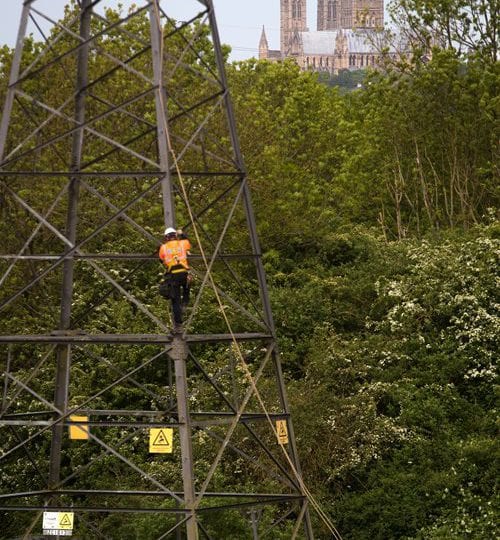WPD overcome challenges to make way for new road
Engineers at Western Power Distribution overcame a number of challenges whilst moving 7.5km of electrical apparatus to make way for a new road in Lincoln.
29th August 2018 by Networks

The team working on the project were faced with a host of archaeological restrictions, tricky site access, a flood risk and a railway and busy road to contend with.
With plans for the new Lincoln Eastern Bypass pressing ahead, the company were approached by Lincolnshire County Council in early 2017 to move 7.5km of electrical apparatus to make way for the new road.
Initial designs were produced and Wayleave Specialist Sean Ingram began negotiations with landowners, tenants and their agents for new routes for our infrastructure.
He said: “I met all the tenants on site to discuss the proposed new routes and peg out our new equipment positions so that they could see the impact on their land in relation to the bypass route.
“I also profiled the routes to determine the new poles sizes – a task which was difficult because the actual work on the bypass had not started, so it required the road position and ground level to be marked out as well.
It took numerous site visits and changes to the proposals before all five wayleaves were obtained and designs, managed by Lincoln City planner Aaron Sadd, could be finalised.
“Multiple sections of 11kV and 33kV circuits needed to be diverted, including four 33kV towers.” explained Sadd.
“Initial designs took two weeks, however there were numerous meetings with Lincolnshire County Council and several redesigns were required as the wayleave negotiations progressed and the schedule of construction phasing was updated,” he added.
While work of this nature on agricultural land would usually be scheduled to take place during the summer months when the weather is more reliable, pressure to meet the deadline for the diversion work meant that it had to get underway. Work started on site in May 2017 involving a variety of considerations, as technician Chris Thornton explained.
“The location of a Roman archaeological site caused several delays and even once we got the go ahead, there were somewhere in the region of 100 archaeologists assigned to survey all of the excavations and work carefully.
“The site itself was very busy with numerous contractors all contributing to different elements of the diversion work and construction of the bypass. Access to the site – which was prone to flooding – was also problematic, so we had to build a causeway.
“We also had to dismantle several spans of line from over a railway and a road simultaneously at night. It was complex work and wouldn’t usually be undertaken by us but everyone pulled together to get the work done. It was a fantastic collaboration between the live line team, overhead line construction team, jointing teams, technicians and engineering specialists along with the technician and tower linesman from major projects.”
Comments
Login on register to comment
Related content

Power
The future for vegetation management
Why networks should focus on data not trees to overcome the costly challenges involved in vegetation management

Power
An unprecedented opportunity for change
Why short interruptions will matter in RIIO-ED2 and how to address them.

Power
Funding for SSEN electric vehicle scheme
Innovation initiative will bring forward portable EV charging devices
Related supplier content

Power
Load patterns and lockdown: how Covid-19 is impacting electricity networks
Insights into dynamics on the low voltage network as the outbreak unfolds

Downloads
Protect electrical equipment from insulation failure
Insulation faults are a major cause leading to the eventual failure of electrical equipment. Partial discharge (PD) is a very reliable indicator of developing insulation faults. Regular PD testing allows users to detect and analyze PD activity

Heat
How E.ON. is helping the City of London become a zero emissions city
Discover Citigen. Deep in the heart of our bustling capital